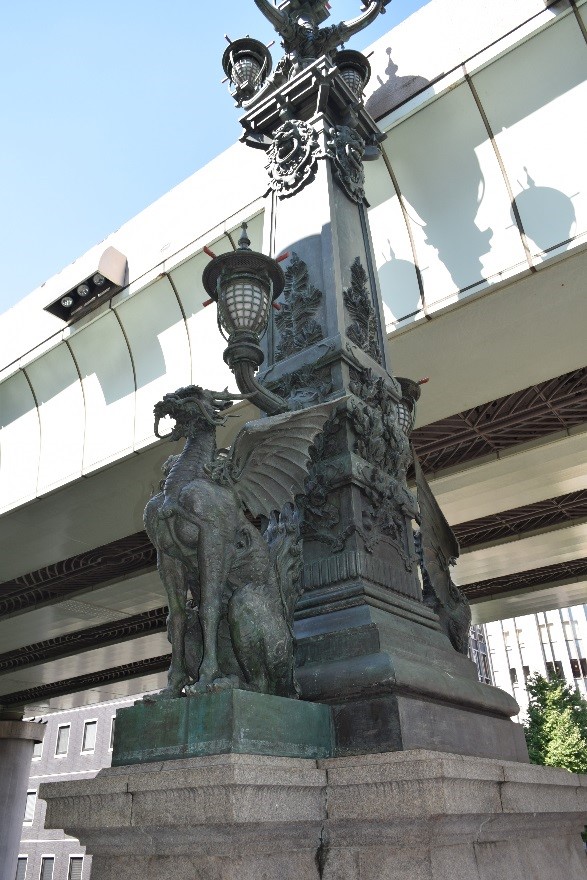“Tokyo Review 019” Nihombashi area-3
“Wings of Kirin” and Edo Culture bred in Nihombashi
In the center of Nihombashi area there is a bridge named “Nihombashi”. The wooden ‘Nihombashi’ burned down many times by fire, but in 1906 after the Russo-Japanese War, it was planned to be renovated into a stone bridge as a monument suitable for Tokyo city. Based on a modern Western style, the goal was to have both a monumental character suitable for Tokyo in Meiji and a character as a historical symbol of Edo. As a result, it is said that the bridge’s main body was designed with a majestic “Renaissance style” using granite, decorated with statues of Edo motifs such as a lion and a “Kirin”. This stone arch bridge was finally completed in 1911 and has been maintained till present, designated as an important cultural heritage of the country in 1974.
The statue of the lion with the coat of arms of Tokyo in the four corners of this bridge and “Kirin” on the center of both sides are the works by sculptor Mr. Osao Watanabe and Sekkei Okazaki. “Kirin” is a sacred beast that shows the sacred weather of saints from the ancient times, decorating the center pillar of the bridge indicating the road origin of Japan. They stand there as if they are honoring the reign of Meiji. The center pillars are shaped like obelisks seen in Paris and other European cities, but they are decorated with relief of pines and Enoki leaves which were planted as milestones in the Edo period.
This winged Kirin statue became famous from the novel and the movie “The Wings of Kirin” by Mr. Keigo Higashino. Among his novels, Nihombashi area such as Ningyocho often appears in the series whose hero is Kaga Kyoichiro. The reason why inspector Kaga sticks to working at Nihombashi Department was finally revealed in the novel named “When the Curtain of Prayer Descend”.
By the way, Nihombashi in the Edo period was not only the center of commerce and finance, but also the center of culture. Prints such as picture paper and Ukiyo-e have been developed by artisans.
We might understand that the technology of craftsmen from all over the country got in touch with each other, developed in fusion at Nihombashi where the five trunk roads meet. Edo Kabuki is also said to be born in Nakahashi, the midway between Nihombashi and Kyobashi now. After that, the performances such as Kabuki and Ningyo Joruri were relocated to Ningyocho area, and it was said to be limited in three towns: Sakai-cho, Fukiya-cho, and Kobiki-choi. In the TV series drama “Shinzanmono (A new comer)”, inspector Kaga performed by Hiroshi Abe always tries to buy “Ningyou-yaki” (Doll Cake) and ends up failing. It seems to have been devised in Meiji Period based on needs to make something special.
